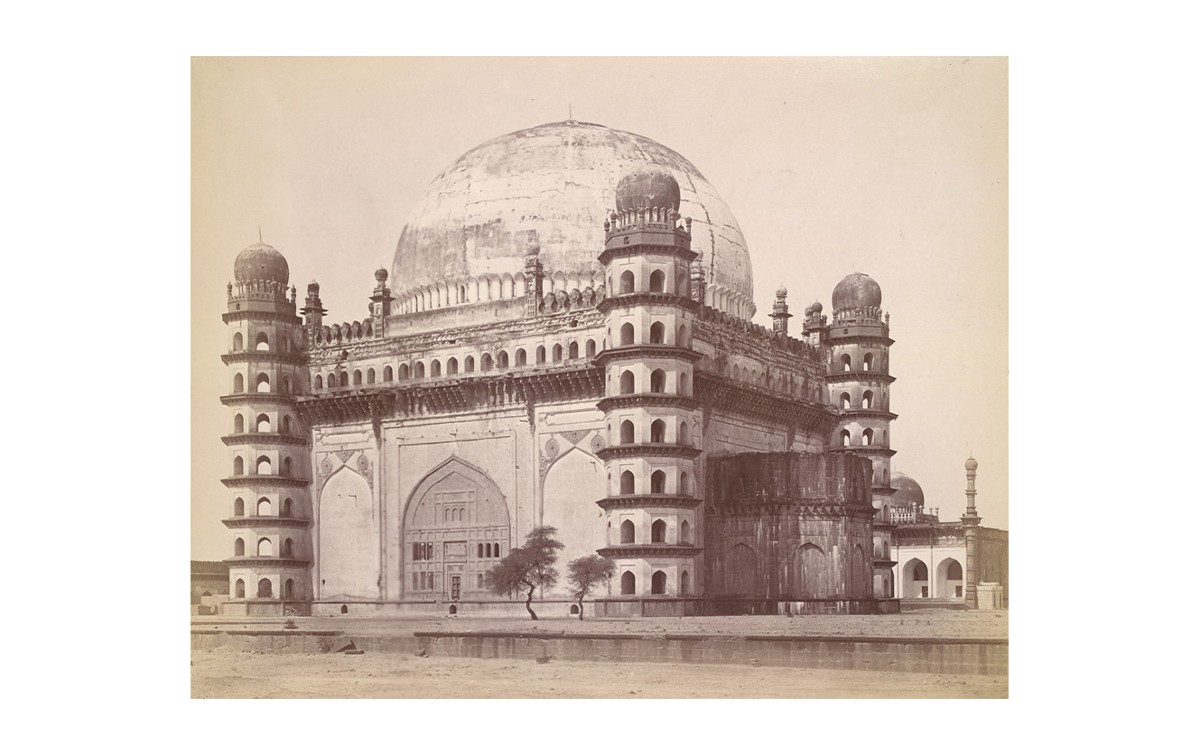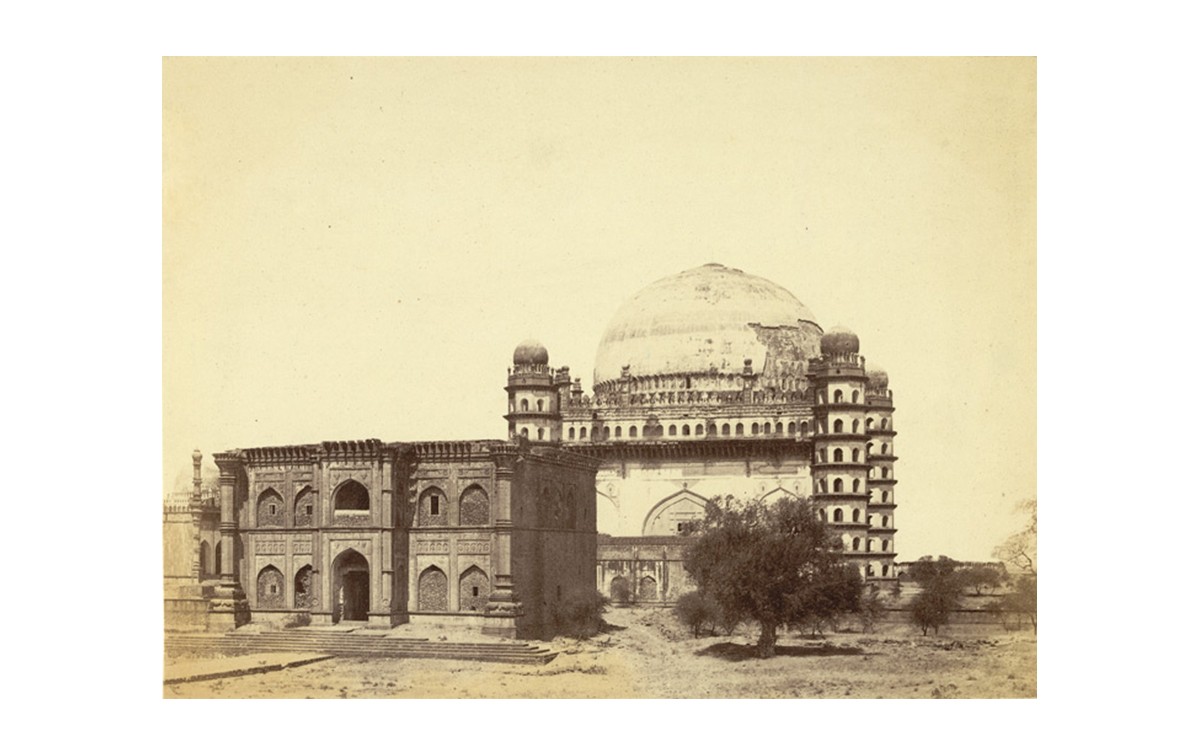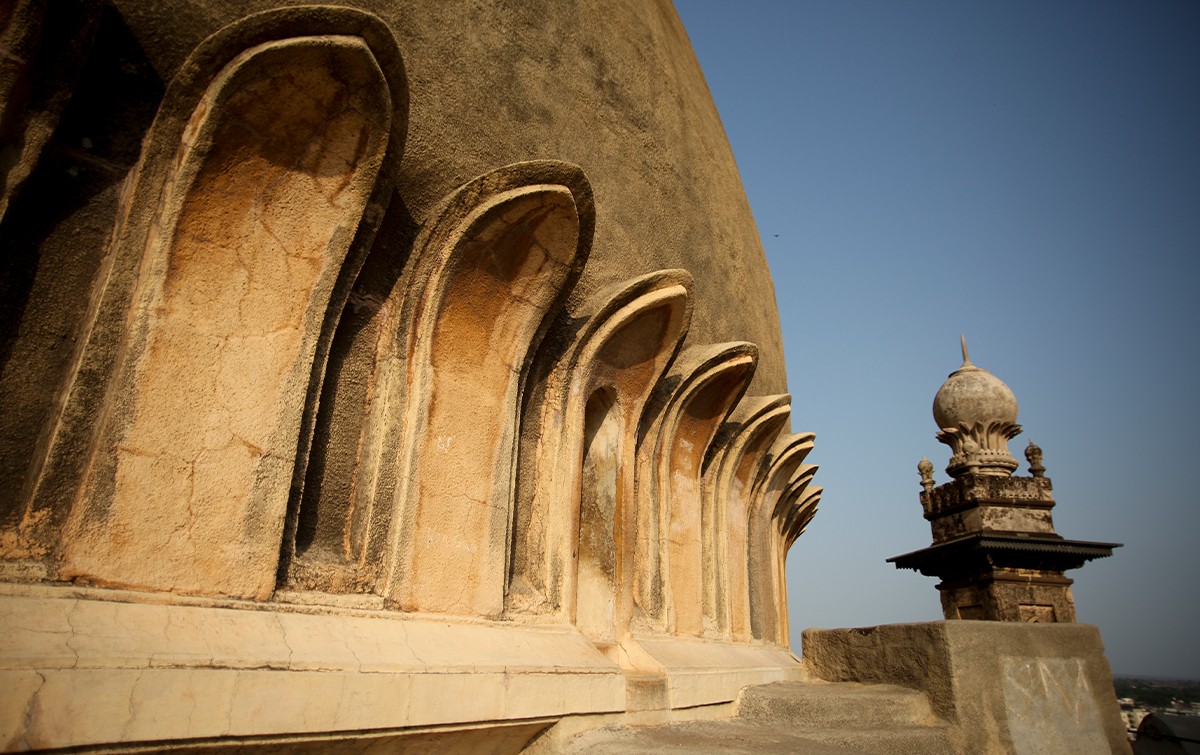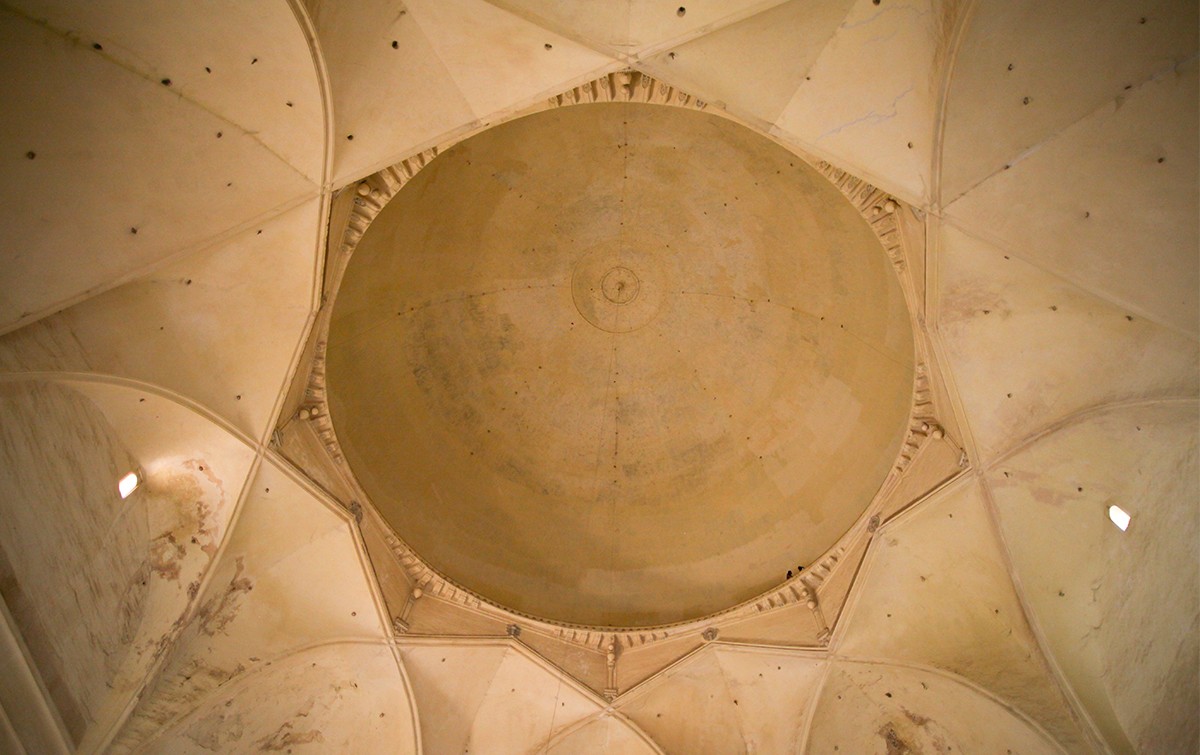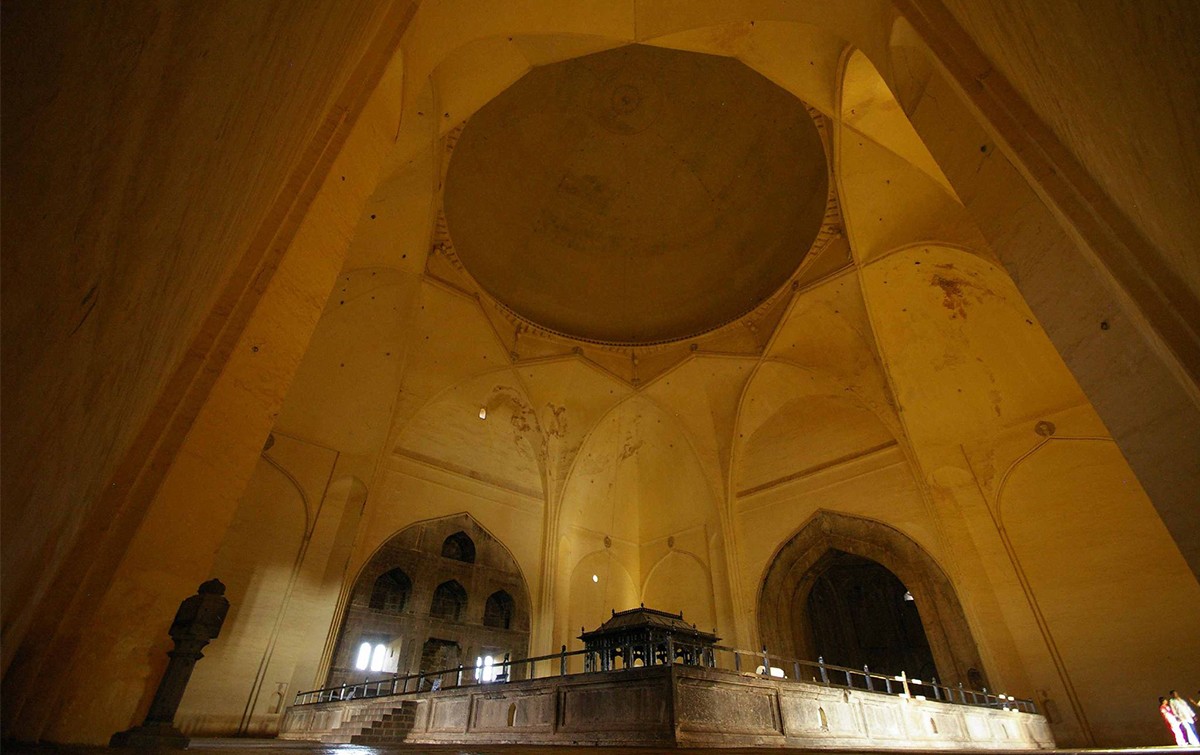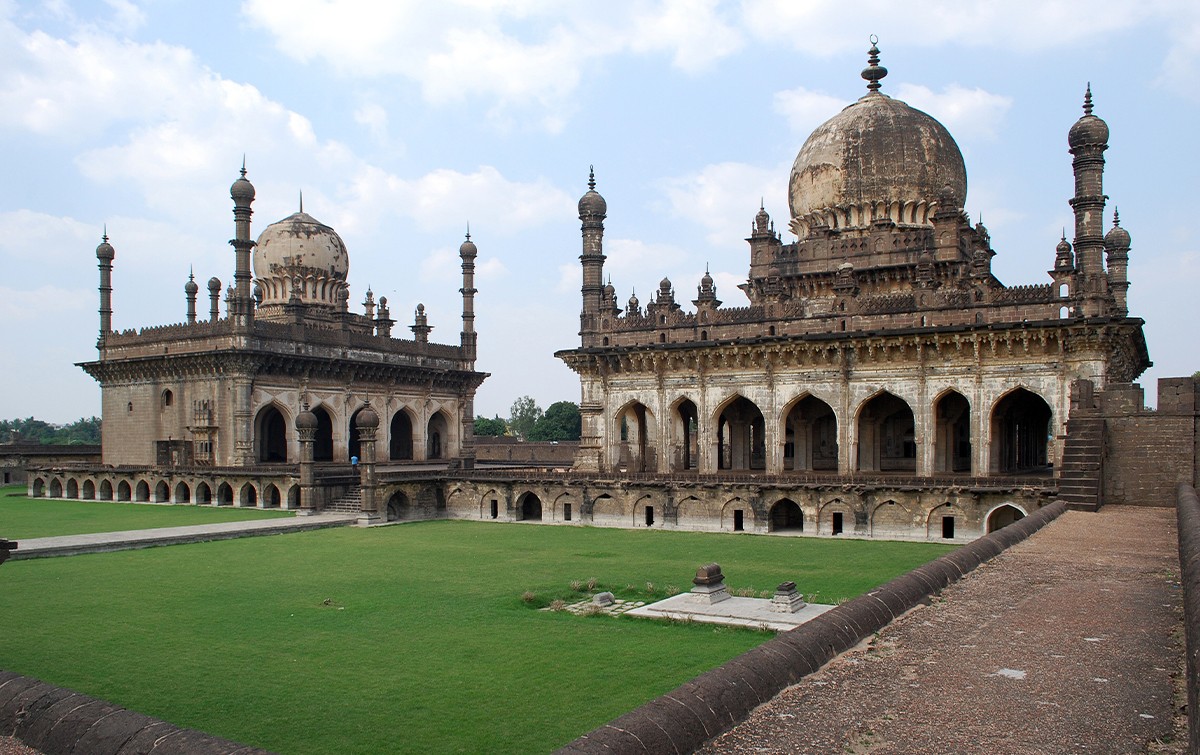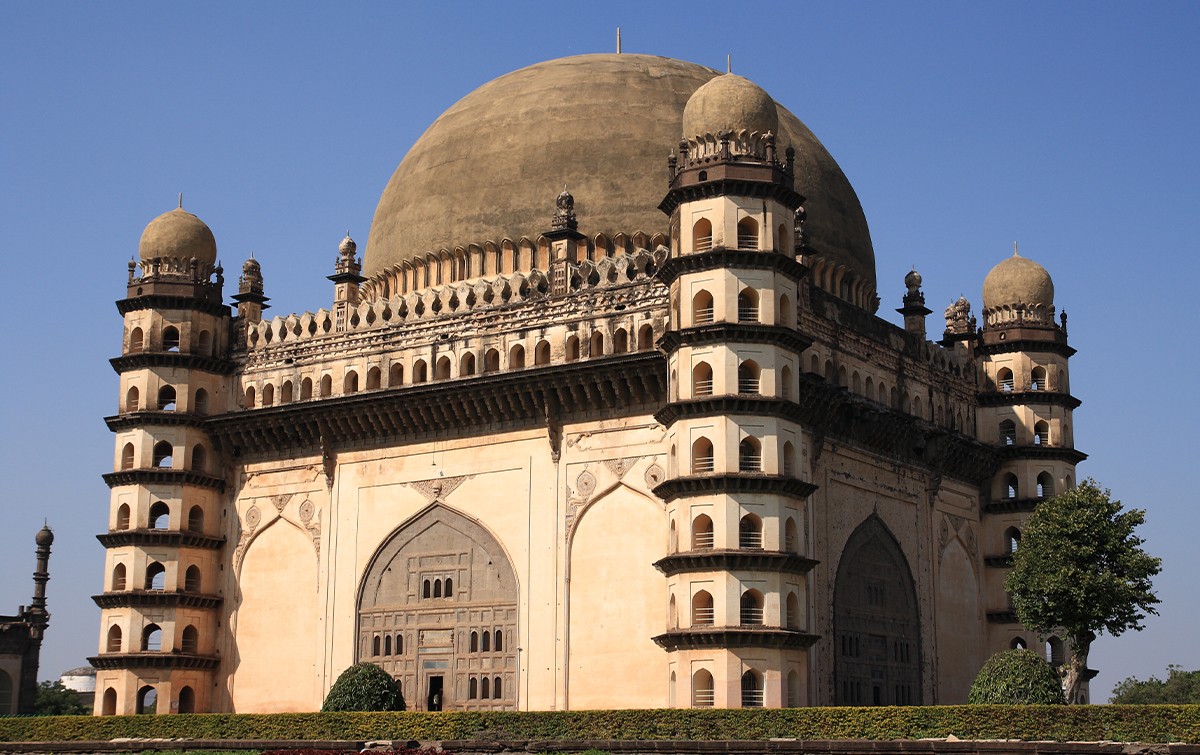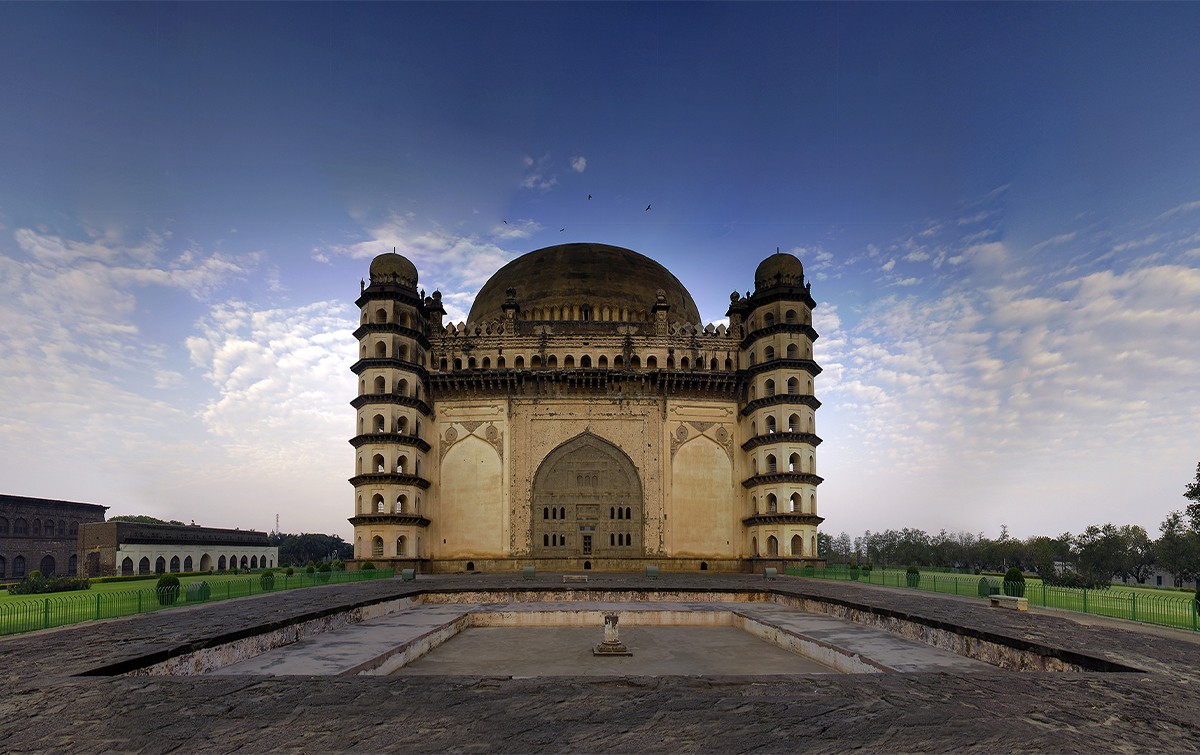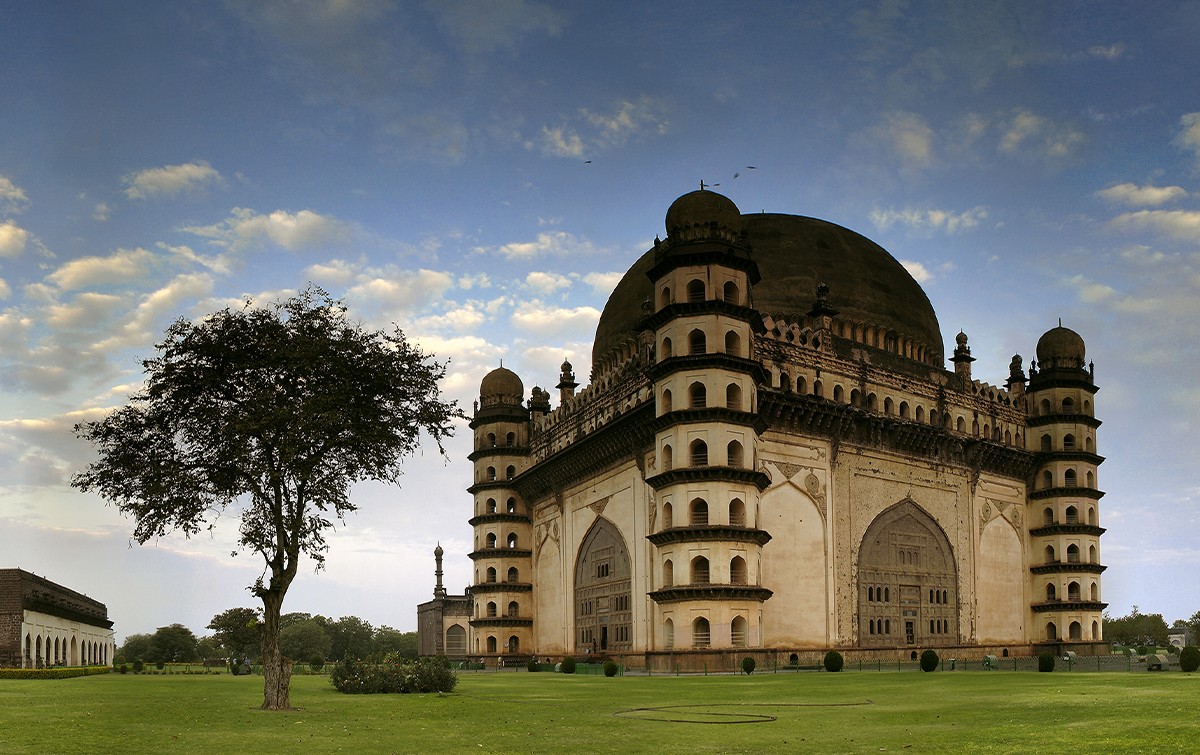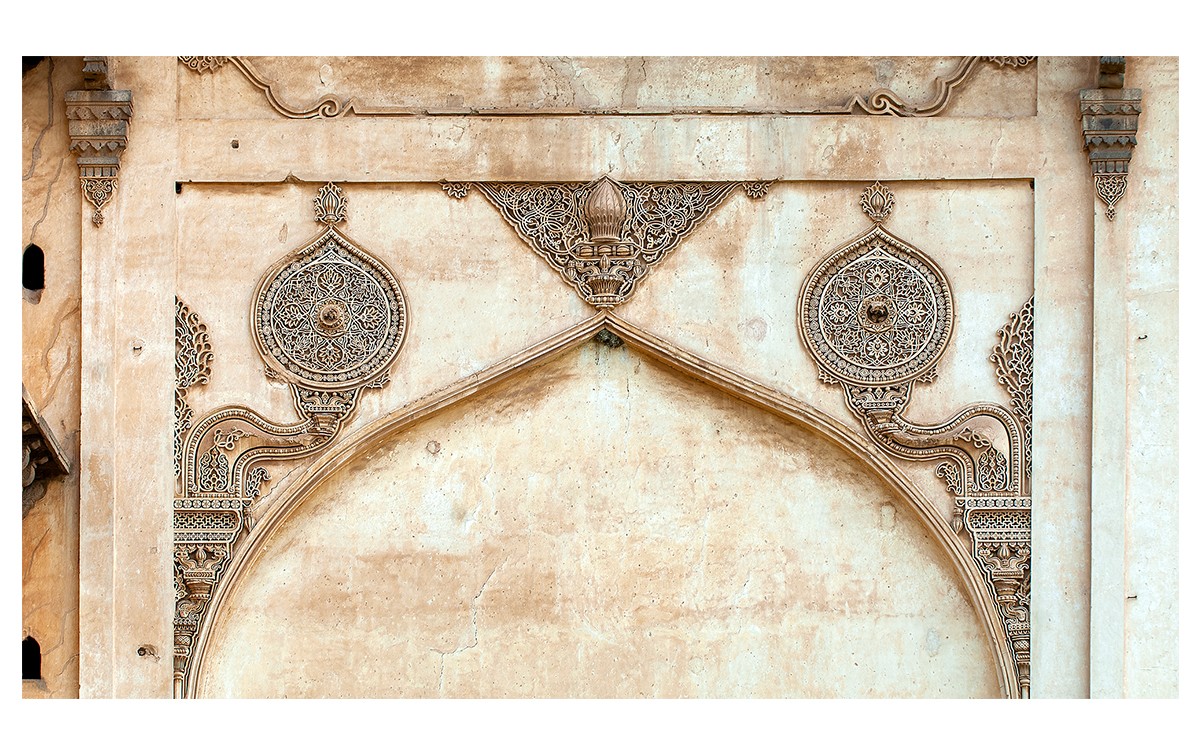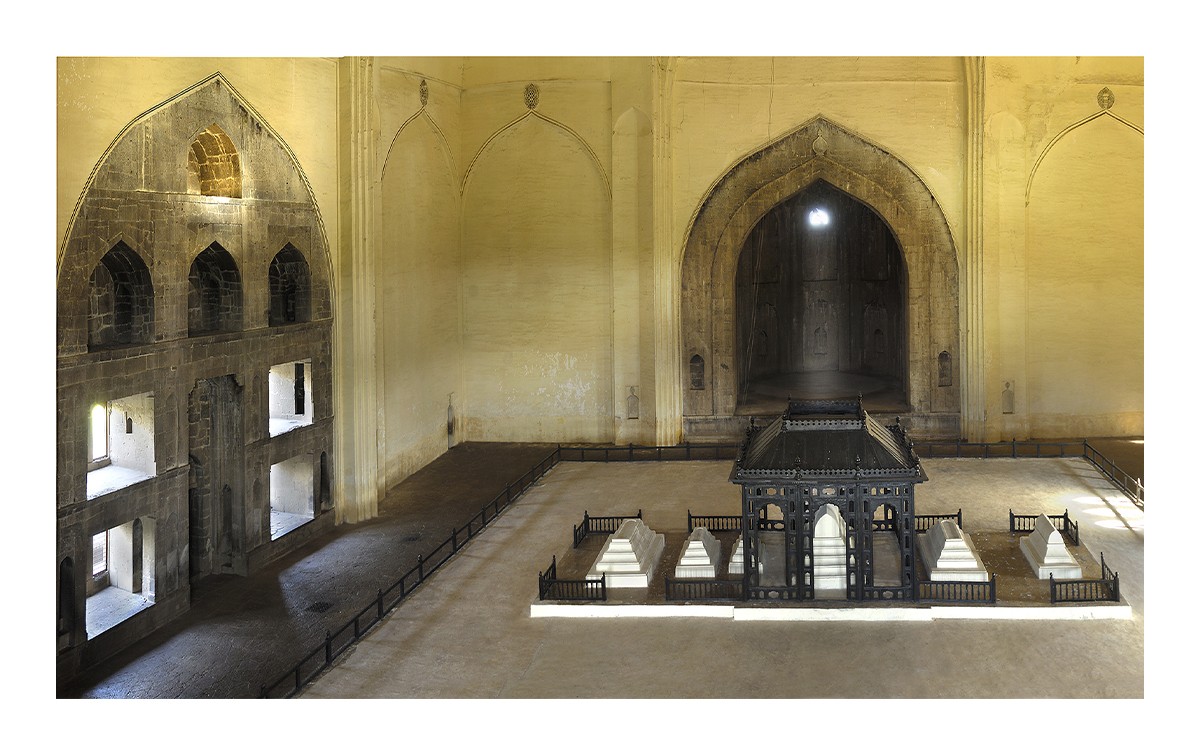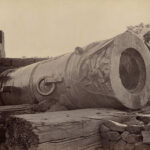The Gol Gumbaz Is Completed
1659
The trend of large religious and funerary monuments in the Deccan that began after 1565 is continued by the Gol Gumbaz, which stands testament to the cultural power of the Bijapur court in the aftermath of the decline of the Vijayanagara empire. Serving as the tomb of Mohammad Adil Shah (r. 1627–56) is one of the grandest structures in the Bijapur Sultanate, built soon after the Ibrahim Rouza. Among the Deccan sultanates, the Adil Shahi dynasty is a particularly significant patron of the arts, mainly manuscript painting and architecture, including the construction of numerous dargahs for local Sufi saints.
At the time of completion, the Gol Gumbaz dome is one of the largest in the world, and remains the largest in India today. The dome is also popular for its whispering gallery on the sixth storey, accessed via one of the small openings through its drum, and known for its acoustic properties that magnify sound over ten to twelve times in its echo.
Bibliography
Eaton, Richard Maxwell. The Sufis of Bijapur, 1300-1700: Social Roles of Sufis in Medieval India. Princeton: Princeton University Press, 1978.
Harle, J. C. The Art and Architecture of the Indian Subcontinent. New Haven: Yale University Press, 1994.
Michell, George, and Mark Zebrowski. Architecture and Art of the Deccan Sultanates. Cambridge, UK: Cambridge University Press, 1999.
Feedback 
This entry appears in
Art in South Asia
Visit Timeline
Associated Timeline Events
First Published: March 11, 2024
Last Updated: May 21, 2024



